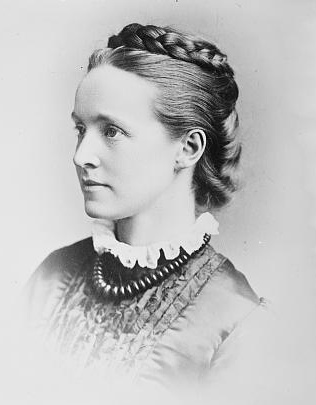The Suffragettes
The word suffrage refers to the right to vote and the Suffragettes refers to the movement to enable women to get the right vote. It began in 1897 when the National Union of Women's Suffrage was founded by Millicent Fawcett.
Unlike some of her peers, Fawcett thought that the best approach to get the vote for women was through peaceful protest, not violence, which she believed would anger men and turn people against the movement. Rather she took a more patient approach that was built around sound, logical arguments. She pointed out that women could do the same jobs, hold the same roles and even earn as much as men so why shouldn’t they be allowed to vote as well. Furthermore, she said that if women had to obey the same laws, they ought to have a say on the people who make them.
However, progress was slow under Fawcett; while she was able to convert some Labour Representation Committee (soon to be the Labour Party) members, most still held the opinion that women did not understand Parliament and so should not be a part of it, which angered women.
In response, a new more radical movement was founded by Emmeline Pankhurst and her daughters Christabel and Sylvia. In 1903 they created the Women's Social and Political Union, which is what would ultimately become called the Suffragettes.

The Suffragettes started peacefully but by 1905 their willingness to use violence became known; Christabel Pankhurst and Annie Kenney stormed into a political meeting in Manchester and asked two Liberal politicians (Winston Churchill and Sir Edward Grey) whether or not they believe women should be allowed to vote.
Behaviour like this were relatively unheard of at the time and it resulted in the two women being arrested. Pankhurst and Kenney chose prison instead of paying a fine, which they believed would help highlight the injustice of the current state of affairs.
The Suffragettes movement got more extreme - churches were burned down because the Church of England stood as opposition to female suffrage. Shop windows along Oxford Street were smashed and the women chained themselves to the gates of Buckingham Palace. The attacked Politicians and firebombed their homes. Moreover, Golf courses, which were all male establishments, were also vandalised.
Suffragettes who ended up in prison, as they were happy to do, would often go on hunger strike and refuse all food. They knew that if they died in jail they would become martyrs and raise awareness of their cause, so prison officers would have to force feed them.
In response the government introduced the Cat and Mouse Act, which stated that Suffragettes could go on hunger strike and they would eventually be released when they were very weak from hunger, and this often resulted in their deaths, but not in the prison. If they regained their strength, they would simply be arrested again and the process would start over.
This only made the Suffragettes more extreme.
Arguably the most famous incident involving the Suffragettes was in June 1913 at the Derby, an iconic horse race. During the race Emily Wilding Davison threw herself under Anmer, which was the King's horse. She died in hospital and became the Suffragettes’ first martyr. In many ways the event backfired though, as people used her action to show that even highly educated women were still prone to rash behaviour, which did not support the argument that they should be allowed to vote.
When World War One broke out in August 1914, Emmeline Pankhurst encoiraged the Suffragettes to stop their violence. Instead they supported the war effort and the role women played during the War would go a long way to securing them the vote, which was passed in the Representation of the People Act in 1918.
See also: Suffragettes Tactics
MLA Citation/Reference
"The Suffragettes". HistoryLearning.com. 2025. Web.
